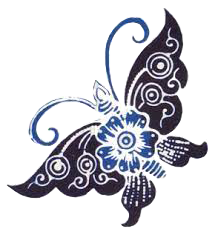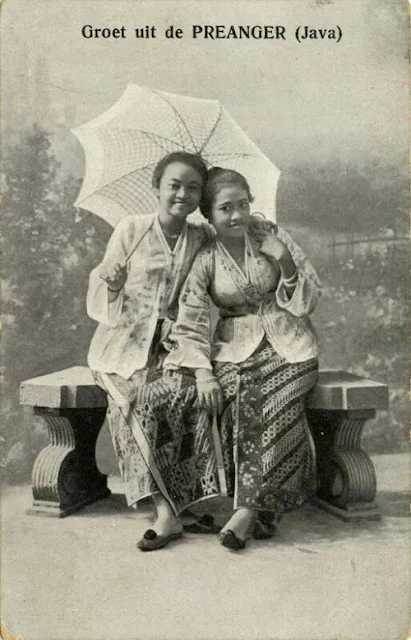Batik Diplomacy, A Long History of Weaving Diversity
As one of the cultural products that is easily recognized and easy to wear, batik gives color but at the same time can be flexible and appropriate in various situations.
When batik was chosen as the marker or "dress code" at the UN Security Council Session which took place on Tuesday (7/5/2019) in New York, United States, it must be admitted that it was a smart idea.
Batik is not only a sign of respect for Indonesia which became president of the UN Security Council in May, but on the other hand indirectly becomes a symbol of Indonesian diplomacy.
Batik is one form of fashion craft that is indeed very typical of Indonesia. As one of the cultural products that is easily recognized and easy to wear, batik seems to be a messenger that Indonesia's role in world peace is like batik for its wearer. It gives color but at the same time can be flexible and appropriate in various situations. Like the motto of Indonesian diplomacy, free and active.
Transoceanic Trade
Batik's development in Indonesia represents a long history that spans from when the Austronesian nations from the South China region were able to penetrate the Malay Archipelago to the Pacific. Traces of civilization characterized by square axes mark the emergence of ancestors who had the ability to process wood, ceramics, and embroidery or weaving.
Patterns of angular lines with mosaic shapes are often found in artifacts that are suspected to come from the Dong-son or Nekara-Bronze civilization. Experts estimate its age to be around 2000 years ago.
Weaving technology itself, experts estimate, has been known in the archipelago since two hundred years before Christ. Michael Hitchcok, a researcher from Hull University, estimates that this period was contemporaneous with the reign of the Han dynasty in China. The bronze statues have similarities with those found in eastern Indonesia. The artifacts show figures of people weaving. Both statues from the Han dynasty and from Flores show figures of weavers using ikat looms. The Javanese know it as Gedogan.
The history of the development of Southeast Asian weaving tools is further embedded in the reliefs of the Borobudur temple. The image of a woman pulling a bamboo blade that is part of a woven ikat tool is seen in reliefs estimated to have been made in the 9th century AD.
The notes of the Chinese historian Yi Jing are among those who recorded the journey of Buddhist monks who studied in Srivijaya during that period. Part of the notes about the great country on the island of Sumatra has known cotton weaving technology. Even the king who was at the northern tip of the island of Sumatra was recorded as having worn silk cloth. What is clear is that the development of genomic research technology for the ancestors of Southeast Asians has confirmed that the sea trade route in the Indian Ocean has indeed been very diasporic since at least 2000 years ago.
Records of documents regulating the Sima (perdikan) region during the 10th to 15th centuries AD show traces of the development of further weaving technology products. Jan Wisseman Christie, also from Hull University, observed the existence of various types of cloth as offerings in ceremonies to honor high-ranking palace officials.
The testimony of Ma Huan (15th century), a recorder of Cheng Ho's fleet, and Tome Pires (16th century), a pharmacist from Portugal, are further clues to the existence of woven products in Indonesia. Whether imported from India or China, the fabrics have become everyday clothing.
Cosmopolitan merchant settlements along the north coast of Java show the beauty of their inhabitants. They appear attractive and handsome as a result of mixed marriages between nations. From this area a new ruling class will emerge along with the development of Islam.
Practically since the arrival of the Portuguese and their success in occupying Malacca, records of woven products, cotton cloth, silk, and what was later known as batik have begun to enter the world's treasury. It was the Dutch who first recorded the word 'batick' in 1641. Shipping records from Batavia to Sumatra show a package of clothes with that name. It was also the Dutch who later developed the textile trade and pioneered the batik industry in various regions which until now have become batik 'clusters'.
Indonesian Batik Cluster
A flashback of the history of Indonesian batik, from prehistoric times, the Middle Ages, to the early modern era shows the long trail of batik as a world cultural heritage. As a cultural product that is closely associated with the fusion of various nations, batik is indeed worthy of being present in international cultural circles.
Until the modern era, batik in Indonesia can generally be found in various regions. The former first lady, Ani Yudhoyono, in her book My Batik Stories (2010) groups the batiks that have developed in Indonesia into several groups. The first is Priangan Batik, which includes Garut and Tasikmalaya. The second is Coastal Batik, its territory stretches from Betawi, Indramayu, Cirebon, Pekalongan, Lasem, Tuban, and Madura. While the third is Inland Batik. Its territory includes Banyumas, Bagelen-Kedu, Yogyakarta, Surakarta, Sragen, and Pacitan.
The division of Indonesian batik into various clusters above has a complex and diverse historical background. Coastal Batik for example. Nuansa, China, India, Persia, to Portugal, and the Netherlands all have their various expressions. Several developments in history also determine various styles and tastes. Meanwhile, inland batik in many ways inherits older traditions but in very modern expressions.
Several histories of conflict and war in past history also make a difference why some very popular batik variations cannot be found or are not popular in other regions.


